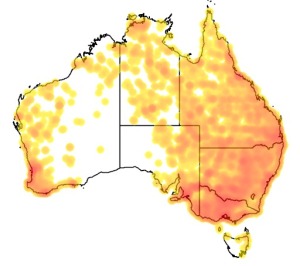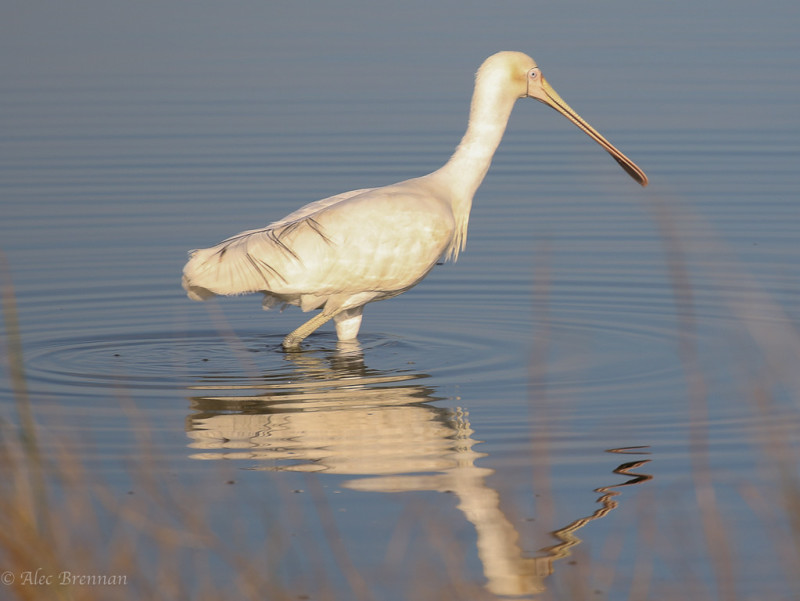Colours
Distinguishing features
It has all white plumage. The long spoon-shaped bill, bare-skinned face, legs and feet are all yellow, while the iris is pale yellow. The sexes are similar in plumage and coloration.
In the breeding season, the face is lined with black, and long hackles develop on the chest, and the wings have black tips. (Wikipedia)
Size
- From 80 cm to 90 cm (Length of specimen)
Wingspan
- Up to 150 cm and averaging 140 cm
Synonyms
Distribution

©Atlas of Living Australia: Australian distribution: Yellow-billed Spoonbill (Platalea (Platalea) flavipes)
Distribution and habitat preferences
It is common in southeast Australia; it is not unusual on the remainder of the continent, and is a vagrant to New Zealand, Lord Howe Island and Norfolk Island. It nests in trees, marshes or reed-beds, and often roosts in trees. It occurs in shallows of wetlands and occasionally on dry pasture. (Wikipedia)
Diet
When slow sweeping, It walks with the bill at an angle at about 60 degrees to horizontal and with the bill tip open about 2 to 4 cm, sweeping an arc of around 120 degrees in front of the bird. The bird walks slowly, kicking up debris and small animals from the bottom of the water, which it then senses and catches with its bill. When an item is detected, the spoonbill switches to intensive sweeping of a small area.
It has a row of small blunt knobs known as papillae which line the margins of the upper and lower mandible of the "spoon". These are sensory structures which help the bird sense vibration and hence seize its prey. (Wikipedia)



